ROOM: The Space Journal is one of the top magazines on space exploration, technology and industry. At ROOM, we share a common goal – advancement of peaceful space exploration for the benefit of humankind, all while bringing you incisive articles on an array of trending topics. Our authors include experts and industry leaders from all over the world, which lets us bring you the most up-to-date and detailed information about nasa exoplanet missions.
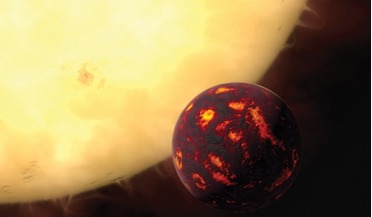 March 2017
Twinkle - a mission to unravel the story of planets in our galaxy
March 2017
Twinkle - a mission to unravel the story of planets in our galaxy
...Ongoing and planned ESA and NASA space missions such as GAIA, Cheops, PLATO, Kepler II and TESS will increase the number of known systems to tens of thousands. Exoplanets have been detected around every ...we focus on planets orbiting very bright stars, a small telescope can do wonders. A bespoke space mission for characterisation of exoplanet atmospheres would have several advantages: experience with Hubble and Spitzer indicates that the instrument...
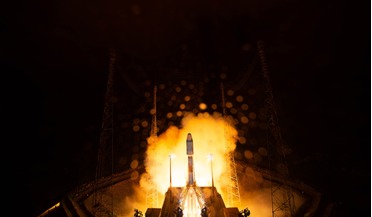 18 December 2019
After delays, ESA’s exoplanet mission launches successfully
18 December 2019
After delays, ESA’s exoplanet mission launches successfully
... ESA and Switzerland, with important contribution from 10 other ESA Member States. ESA’s first mission dedicated to extrasolar planets, or exoplanets, it will investigate known planets beyond our Solar System and provide key insight into the... are made of and how they formed. Cheops will also pave the way for our future exoplanet missions, from the international James Webb Telescope to ESA’s very own Plato and Ariel satellites, keeping European...
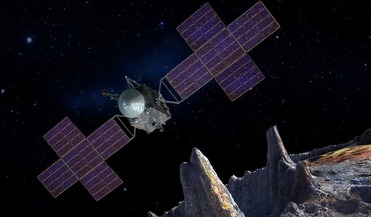 20 October 2017
NASA Psyche mission to use laser communication
20 October 2017
NASA Psyche mission to use laser communication
...a ‘game-changing’ technology and its development phase was funded by NASA’s STMD's Game Changing Development Program. STMD stands for Space Technology Mission Directorate and laser communication is expected to revolutionise future space endeavours. ...that we hope will help us eventually communicate with people in deep space is excellent integration of NASA missions and all of our goals," said Lindy Elkins-Tanton, Director of the School of Earth and...
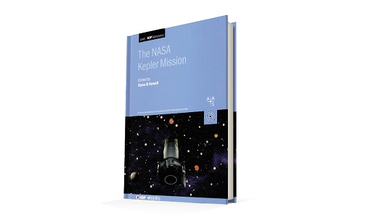 22 June 2021
The NASA Kepler Mission
22 June 2021
The NASA Kepler Mission
... heard of the Hubble Space Telescope (HST), relatively few will be familiar with NASA’s Kepler mission, let alone the follow-on K2 mission performed by the same satellite. The authors of this book hope to change that... using solar pressure”) is a case in point. Regarding the results, there are significant sections on exoplanets and stellar astrophysics with shorter sections on the solar system and extragalactic studies. Each chapter concludes...
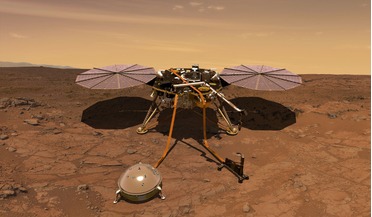 04 May 2018
NASA's InSight mission gears up for tomorrow's launch
04 May 2018
NASA's InSight mission gears up for tomorrow's launch
... countdown begins for the space agency's next mission; the launch of its martian rover known as InSight. Just a few weeks ago, NASA sent their Transiting Exoplanet Survey Satellite (TESS) into orbit with the aid ...InSight. InSight, which stands for Interior Exploration using Seismic Investigations, Geodesy and Heat Transport, will be NASA’s first mission to peer deep within the interior of Mars with a suite of instruments designed to give the ...
 January 2023
Private space stations and NASA’s effort to re-invent itself
January 2023
Private space stations and NASA’s effort to re-invent itself
... lifetime ended up being more than twice its original design-life (32 years rather than 15). However, the NASA of the 2020s is clearly intent on reinventing itself. Today, it is no longer developing ‘technical specifications’ in-house;...astronauts (each paying $155 million) travelled on a SpaceX Dragon spacecraft to the ISS for a 17-day mission. As a start-up, Axiom Space has established its credibility in a short period of time. Northrop Grumman’s...
 18 October 2021
NASA's Lucy mission launches, encounters problem with solar panel
18 October 2021
NASA's Lucy mission launches, encounters problem with solar panel
...’s elusive Trojan asteroids. But, in order to assure that there is enough energy to power the spacecraft throughout the mission, the solar panels will need to deploy flawlessly, said Principal Investigator Hal Levison of the Southwest Institute..., we have this.” Unfortunately for Levison and the rest of the Lucy mission, those 20 minutes are not quite over. The latest report by NASA says that Lucy has deployed both panels, both are producing power...
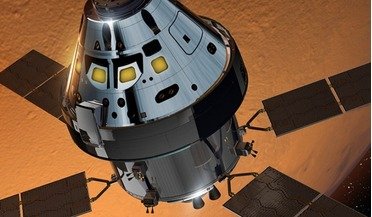 January 2017
Blueprint for NASA’s journey to Mars
January 2017
Blueprint for NASA’s journey to Mars
... the Mars-bound vehicle, which could be provided by international and commercial entities. Mission campaign A series of missions, starting with EM-1 in 2018, will be required to meet NASA’s objectives for the Mars proving ground in cis-lunar space and to build...has been fascinated with the Red planet. Lockheed Martin built NASA’s first Mars lander and has been a part of every NASA Mars mission since. The Mars Base Camp concept builds upon existing ...
 November 2025
Vantage Vigil - Europe’s first operational space weather mission nears approval
November 2025
Vantage Vigil - Europe’s first operational space weather mission nears approval
...is the aging state of current solar monitoring infrastructure. The joint NASA-ESA Solar and Heliospheric Observatory mission (SOHO) and NASA STEREO missions are operating well beyond their design lifetimes. While NOAA’s GOES ...and upcoming Space Weather Follow On (SWFO) missions will partially fill the gap,...